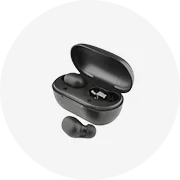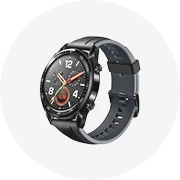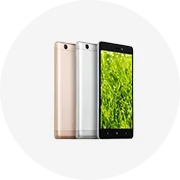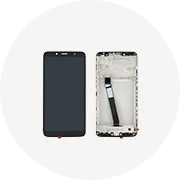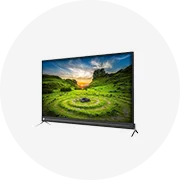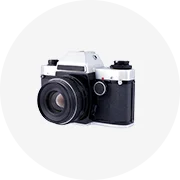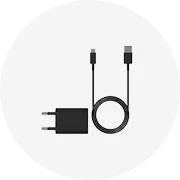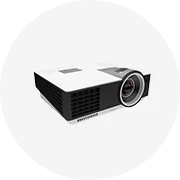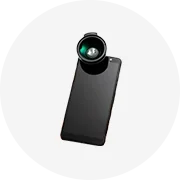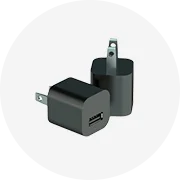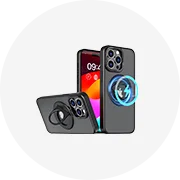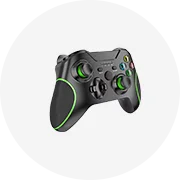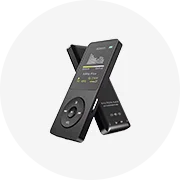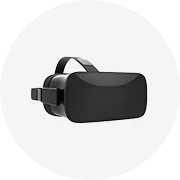Bluetooth aux reciever
(5822 products available)






WIFI 2.4G Bluetooth 5.0 Audio Receiver Board Integrates Auxin/U Disk Ethernet Interface BT5.0





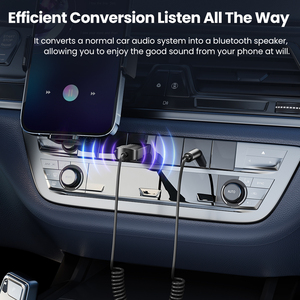
Toocki Aux bluetooth Adapter Car Portable Hands-free bluetooth 5.0 Audio Transmitter Receivers







150M Free Drive Wireless Wi-fi 2.4GHz And 5.8GHz Frequency Band Receiver Transmitter USB Adapter Mini Computer Wifi Usb Dongle







2 In1 Transmitter Receiver 3.5mm Aux Wireless Audio Adapter Bluetooth Adapter For Airplane







Portable Indoor And Outdoor Belt Bluetooth Speaker With Adjustable Bass And Treble Supports USB, Bluetooth













3.5mm Wireless Bluetooth Aux Adapter for Car Bluetooth 5.0 Music Receiver with Noise Cancelling and Headphone Jack for HomeStere






AirFly 2 In1 Wireless Transmitter Receiver 3.5mm AUX Airplane Bluetooth Adapter Audio Adapter
Popular in your industry






Bluetooth for Car, Noise Cancelling 3.5mm AUX Bluetooth Adapter Wireless Audio Receiver for Home Stereo






2in1 Bluetooths Wireless Receiver Transmitter RCA to 3.5mm Aux Audio Adapter
Related Searches:






Wireless Bluetooth Receiver Adapter 3.5mm Jack for Car Music Audio Aux Audio Receiver with bluetooth






OEM Customized Bluetooth Sound bar Speaker for PC TV Theater Aux Wired Home Surround Stereo Soundbar With Subwoofer Wireless






Metal USB Bluetooth Adapter Cable Car 3.5mm Jack Aux Bluetooth Receiver Audio Music Receiver USB Audio Car bluetooth Receiver





AGETUNR J51 V5.3 Bluetooth Transmitter Receiver 2-in-1 Bluetooth AUX Adapter for TV/Car/PC/Gym ,Pairs 2 Devices Simultaneously






1Mii HOT B06S+ 3.5mm AUX & RCA Out Bluetooth 5.1 Audio Adapter Stereo Wireless Bluetooth Receiver for Speakers





H2 NFC Bluetooth Audio Adapter Sound System Wireless Audio Adapter Receiver for Speakers Home Stereo RCA 3.5MM AUX HIFI






SPDIF 2 in 1 CSR Aptx-HD A2DP Digital Fiber Optical Bluetooth Audio Receiver Transmitter AUX bluetooth Adapter for Tv Optical






UGREEN CM672 Airplane Bluetooth 5.2 Transmitter Adapter 2-in-1 Wireless Bluetooth 3.5mm Aux Audio Receiver for Airpods






Wireless Usb Receiver with 3.5mm Aux Jack for Speaker Pc Car Aux Wireless 5.0 bluetooth Receiver






UGREEN Airplane Bluetooth 5.2 Transmitter Adapter 2-in-1 Wireless Bluetooth 3.5mm Aux Audio Transmitter/Receiver for Airpods






New Design Aux bluetooth Adapter Car Portable Hands-free bluetooth 5.0 Audio Transmitter Receiver BR02






A2DP Bluetooth Receiver 5.1 Audio Transmitter and AptX HIFI Receiver AUX HiFi Adapter for Car Family TV PC Headphones






C36 Bluetooth 5.3 Audio Receiver Digital Display Fiber Optic RCA AUX USB bluetooth Adapter for Car Home PC TV Headphones





High Quality Car Audio Video Accessory for Bluetooth Receiver Transmitter 5.3 AUX Input Smart Hands-Free Calls Stereo Navigation






HSUEL Bluetooth Receiver BT 5.0 Bluetooth Audio Adapter With Clip Dual Connect Wireless Receiver 3.5mm Aux Car Audio Stereo






Wireless Car Bluetooths Receiver Adapter Transmitter With 3.5MM AUX Audio Stereo Music


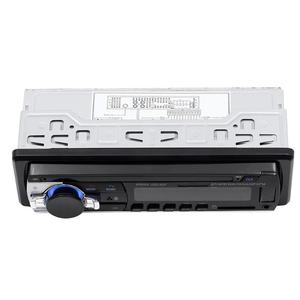



Car Audio Radio 1din Bluetooth Stereo MP3 Player FM Receiver 12V Support Phone Charging AUX/USB/TF Card in Dash Kit






Hot Sale Bluetooth 5.0 Noise Reduction Audio Adapter AUX Car Stereo3.5mm Stereo Bluetooth Receiver






B6 Bluetooth Adapter 5.0 Bluetooth Transmitter AUX Receiver 2-in-1 Wireless Audio Music Stereo






Bluetooth 5.0 Audio Receiver Transmitter TV PC Wireless Adapter DAC Digital to Analog Converter Optical Coaxial to RCA 3.5mm AUX






NFC Bluetooth Audio Adapter Sound System Wireless Audio Adapter Bluetooth Receiver for Speakers Home Stereo RCA 3.5MM AUX HIFI






New Design Aux bluetooth Adapter Car Portable Hands-free bluetooth 5.0 Audio Transmitter Receivers Bluetooth Audio Receiver






New Design Wireless CarPlay Adapter Convert Bluetooth Aux Adapter for Airplane Blue-tooth Transmitter Receiver






Best Serller Aux Rca Spdif Gaming Pc Transmitter Receiver Bluetooth Tv






TG 136 Wireless Bluetooth Speaker Waterproof Subwoofer USB AUX Radio Mp3 Player Boombox Soundbar Led Flashlight






Car Stereo Mini USB Aux Bluetooth Wireless Audio Music Receiver






BT350 Wireless Audio Transmitter Mini 3.5mm Aux Handsfree Bluetooth Stereo Music Adapter Car Kit Bluetooth Receiver
Top categories
About bluetooth aux reciever
Types of Bluetooth aux receivers
The Bluetooth aux receiver is an audio device that transforms a 3.5mm AUX output from an analog to a digital Bluetooth signal. It enables users to listen to music from a smartphone, tablet, and other Bluetooth-enabled devices in a car or on a speaker with only an AUX output. The Bluetooth receiver can link with a Bluetooth-enabled device and play music.
Although the primary purpose of a Bluetooth receiver for AUX is to stream audio, some models also feature built-in microphones that allow hands-free phone calls. Some devices will also allow the user to connect multiple Bluetooth devices at the same time and have their music streamed. When purchasing an AUX Bluetooth receiver, one must determine the kind of receiver they want to purchase. Different models have different features.
- Basic model: The basic model Bluetooth receiver has the device's essential functions. The receiver can connect with Bluetooth-enabled devices and stream audio where the user can control the music played through the device connected to the receiver via Bluetooth. The receiver will include a Bluetooth adapter, which allows the device to connect wirelessly with a Bluetooth-enabled device.
- Music streaming and hands-free calling: As highlighted before, some Bluetooth receivers have the device's standard model functions, like streaming music. The receiver has a built-in microphone that enables hands-free calling. Users may receive the call and press a button on the receiver to answer the call. This will enable them to continue driving or doing other things without having answered the call physically.
- Enhanced audio quality: One of the problems people have with Bluetooth devices is the sound quality that is not so good. Some devices can convert Bluetooth audio to higher-quality formats, like LDAC or aptX HD. High-definition audio over Bluetooth enables people to enjoy a better listening experience. LDAC and aptX HD transform the audio signal by compressing it and in turn, deliver better sound when the signal is transmitted from the Bluetooth device to the receiver. When purchasing a Bluetooth aux cable receiver, be sure that the device and the aux cord transmit in a compatible format.
- Long-range receivers: The typical AUX Bluetooth transmitter and receiver has a wireless range of 30-40 feet. Long-range receivers extend this range and can cover a large area both in and outside the home.
Function and features
When purchasing a receiver for an aux cable for Bluetooth, one should know the properties and features to look for to ensure quality sound output and more efficient use for the customer. Many features can enhance the user's experience when receiving Bluetooth signals and converting them into other forms.
- Sound Quality: When purchasing a Bluetooth receiver for a device, one should purchase one that has good sound quality. Receivers with advanced audio codecs such as aptX can provide better sound quality.
- Battery Life: If the receiver's application does not involve connecting the device to a power supply, the battery life must be long enough to last several hours. It should also charge quickly so that the user does not have to wait for it to charge between uses. Receivers with battery lives lasting 10 hours or more on a single charge are usually preferred. The charging time should be less than 2 hours.
- Charging Port: The charging ports should be the latest USB ports, such as USB-C ports. These ports are easier to charge and connect because they do not require the user to worry about the plug's orientation. They also tend to charge the device faster.
- Wireless Range: The range of a wireless Bluetooth receiver is usually 30 to 100 feet, but this can change depending on the device and the environment. Obstacles such as walls, trees, and buildings can decrease the range. For longer ranges, look for a device with longer transmission capabilities.
- Version: The version of the Bluetooth receiver can refer to different things. It could be the version of the receiver itself, which can be anything from 4.0 to 5.4, or it could refer to the version of Bluetooth technology, which can also be 4.0 to 5.4. The latest versions usually have improvements in audio streaming, speed, range, power consumption, and stability.
- Size and weight: The size and weight of the device also affect buying decisions. Many buyers want a lightweight and compact receiver that is easily portable and fits into small bags or pockets.
- Multi-Device Pairing: Receivers that can connect to many devices at once are preferred. Many users want to connect their smartphones and tablets to the receiver. When users want to listen to music through the receiver on the device, they should be able to do it without having to disconnect other devices.
- Safety: Buyers want to know that the receiver is safe to use. Devices with protections for overcharging, overheating, and short circuits give users peace of mind when charging the device.
Uses of the Bluetooth Aux Receiver
Receivers for Aux Bluetooth have a variety of uses and work excellently in different situations. The common scenarios in which these receivers are used are:
- Old sound devices upgrade: One of the significant receiver uses is to modernize vintage audio systems, which is the primary purpose. Bluetooth devices can wirelessly connect to old audio equipment, eliminating wires. It allows users to use modern audio sources on classic devices, as the receiver bridges the gap between traditional and contemporary technology. Using a Bluetooth receiver, users can listen to music, podcasts, and other audio from digital devices on speakers and systems without Bluetooth capabilities.
- Hands-free calling: Bluetooth receivers provide the convenience of hands-free phone calls on car audio systems. When driving, users can answer phone calls, adjust audio settings, and respond to messages through the receiver with minimal distraction. This feature significantly enhances road safety by minimizing the need to handle phones while driving.
- Streaming audio: Bluetooth receivers allow users to stream music or other audio content from devices without Bluetooth capabilities. When paired with audio systems or speakers, users can listen to their favorite songs, podcasts, and digital audio from phones, tablets, or other streaming devices. Streaming music using a receiver usually enhances entertainment flexibility by providing access to diverse streaming services and multimedia content.
- Wireless listening: Users can enjoy listening to music, podcasts, and other audio content without being restricted by wires. With a Bluetooth adapter for the Aux port, users can enjoy the convenience of moving around the room or away from the audio source while still listening to their favorite audio tracks.
- Multi-device pairing: Bluetooth aux receivers are usually equipped with features that allow them to connect to multiple devices at the same time. As a result, they offer multi-device pairing, allowing users to switch between different audio sources like smartphones, tablets, or other Bluetooth-enabled devices.
- Audio streaming to headphones: One main use is streaming audio to wireless headphones or earbuds. This implementation offers users the chance to listen to music, TV shows, or other audio content without disturbing others.
- Smart home integration: Bluetooth Aux receivers can enhance the smart home experience by integrating effortlessly with various smart devices. Users can connect receivers with smart speakers to stream music and control playback using voice commands through virtual assistants.
How to Choose a Bluetooth aux receiver
When purchasing a Bluetooth aux receiver in bulk, understanding the various receiver types and how each one works is the key to making informed purchasing decisions that meet consumer needs.
Determining the receiver type is the first step in the buying process. Every type of receiver has its strengths, and knowing them will help buyers choose a kind that is compatible with the device targeted for use.
The next step is to purchase a receiver with the features to be used. If the receiver is to be used with a smartphone, it is vital to ensure it has the necessary features of app integration, hands-free calling, a stable connection, and an easy-to-use interface. For in-home audio systems, buyers must ensure the receiver has a user-friendly setup and supports audio streaming apps and services. When buying a receiver for a tablet, battery life, sound quality, and portability must be considered.
Buyers must then ensure the receiver has the necessary audio codecs for optimal audio quality. These codecs include aptX, AAC, and SBC. They must also examine the audio performance of the receiver to ensure it meets the required sound quality standards.
The next step is to determine receiver durability and build quality. Buyers should opt for receivers made with durable materials. They should also consider the receiver's design and whether it is ergonomically designed for easy use and comfortable handling.
When buying a Bluetooth aux receiver for use in vehicles, it is imperative to consider the receiving device's compatibility with in-car audio systems and safety features, such as hands-free calling and voice assistance.
Buyers should also consider the brand reputation and any warranty and customer support offered by the brand. This can help buyers make informed decisions as product reviews are more likely to be trusted.
Finally, buyers must consider the cost of the receivers and the value offered by each receiver. Cost should not compromise the quality of the receiver.
Q&A
Q1: Will a wireless receiver sound as good as a wired connection?
A1: Because of the compression into the receiver and possible interference, a wireless connection might not sound as good as a wired connection. It may also have latency issues which can be problematic. Receiver latency is an entirely different thing and has nothing to do with wireless connection latency.
Q2: What are some common problems with Bluetooth receivers?
A2: The device may not power on, the device may not connect to other devices, there may be no sound playing from the device, or one may not be able to control the Bluetooth device.
Q3: How can one pair their Bluetooth device with the receiver?
A3: Users will need to plug the receiver into an AUX cable first. Once it is plugged in, users can turn on the receiver. The device will show which Bluetooth it is on by showing flashes of light. Users can then go to their Bluetooth device and select the receiver's Bluetooth.

















